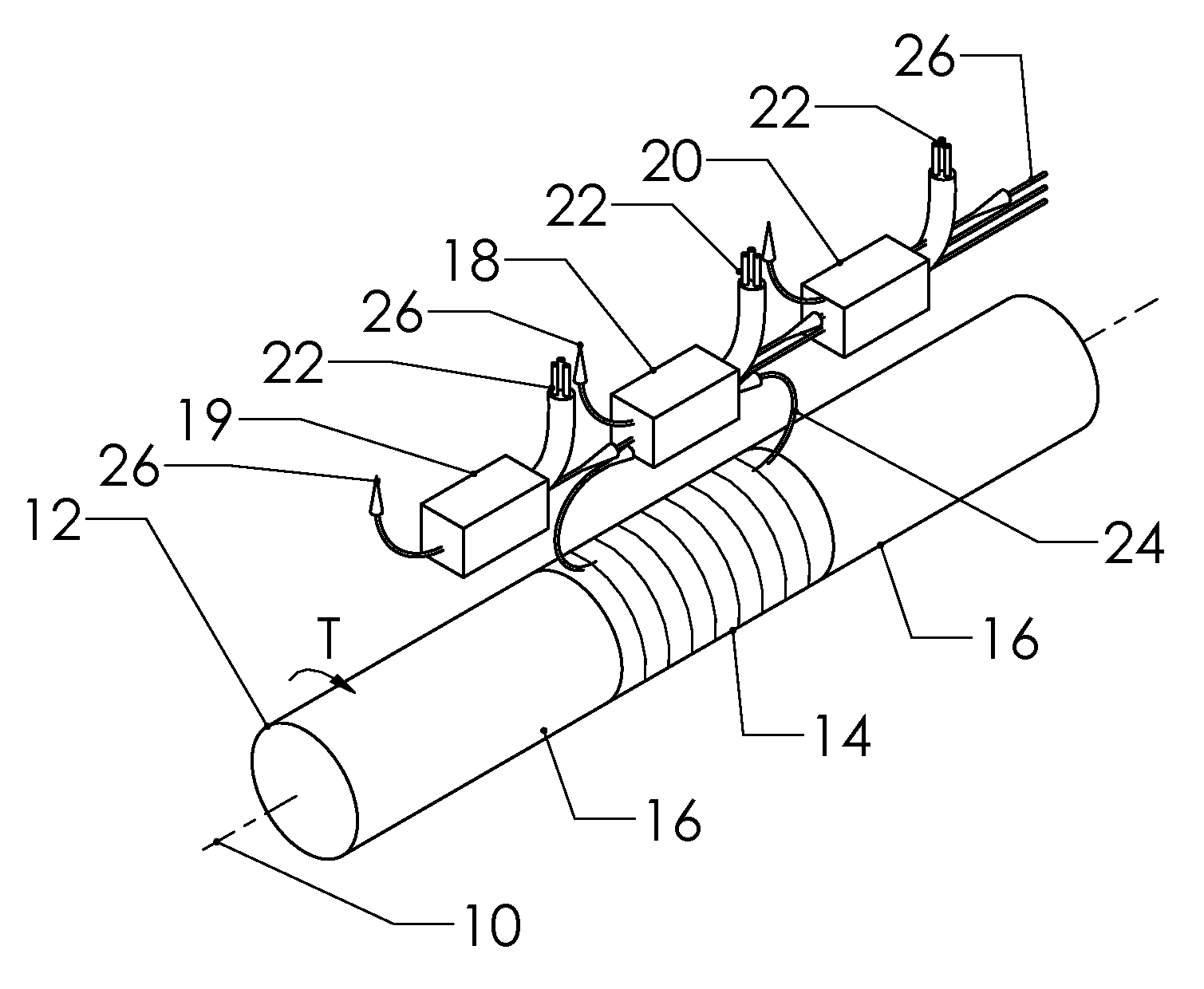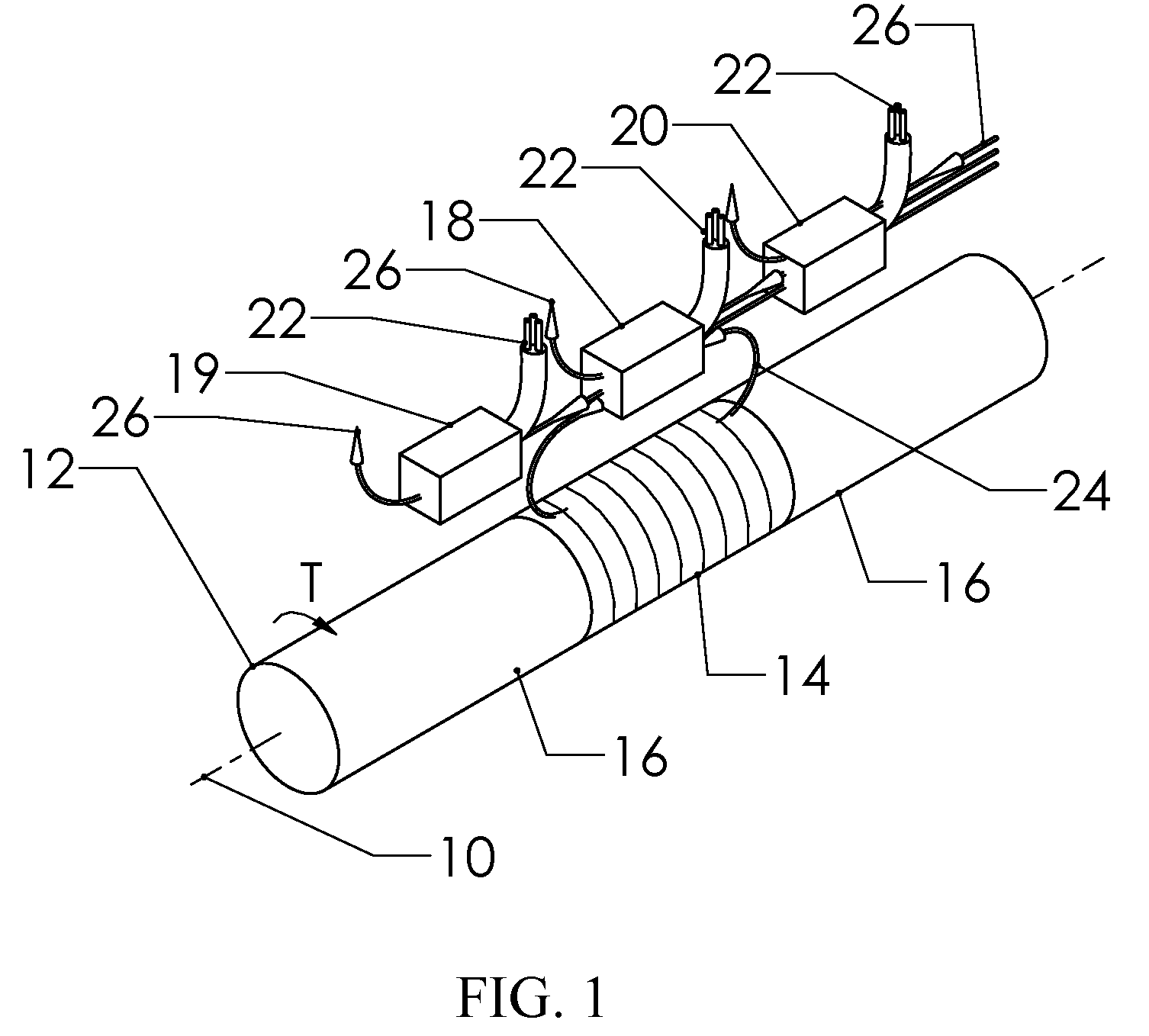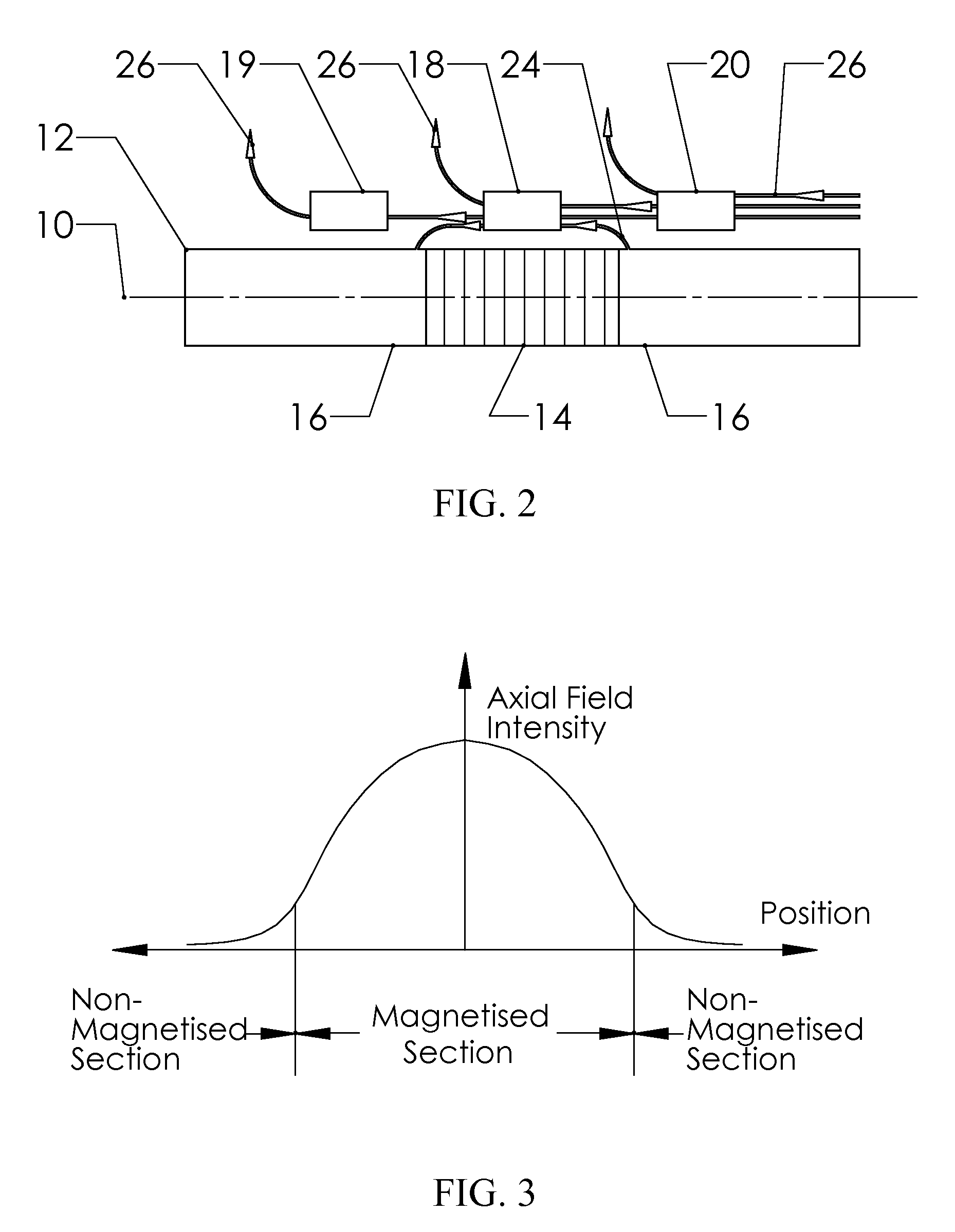Self-compensating magnetoelastic torque sensor system
a self-compensation and magnetoelastic torque technology, applied in the field of magnetic sensors, can solve the problems of unambiguous variables in b, impractically expensive, and inability to eliminate non-uniform external magnetic flux sources, and achieve the effect of low manufacturing cost and ease of us
- Summary
- Abstract
- Description
- Claims
- Application Information
AI Technical Summary
Benefits of technology
Problems solved by technology
Method used
Image
Examples
Embodiment Construction
[0034]FIGS. 1 and 2 illustrate a preferred embodiment of a polarized band based torque sensing apparatus in accordance with the present invention. In this exemplary embodiment, the torque carrying shaft 12, having a torque T applied about a central longitudinal axis 10, has an magnetoelastically active portion 14 and at least one magnetic passive area 16 (e.g., a non-magnetized section). At least one active field sensor 18 is placed proximate to the magnetoelastically active portion 14 to detect the magnetic flux 24 arising from the applied torque, and at least one passive field sensor, 19 or 20, is placed on either side of the active field sensor 18, wherein the passive field sensors 19 and 20 are disposed in such a way that they are far away enough from the magnetoelastically active portion 14 to avoid the magnetic flux 24 dependent on the applied torque T.
[0035]FIG. 3 shows axial magnetic field strength arises from the applied torque T across the magnetoelastic active zone 14, th...
PUM
| Property | Measurement | Unit |
|---|---|---|
| angle | aaaaa | aaaaa |
| torque | aaaaa | aaaaa |
| magnetoelastic | aaaaa | aaaaa |
Abstract
Description
Claims
Application Information
 Login to View More
Login to View More - R&D
- Intellectual Property
- Life Sciences
- Materials
- Tech Scout
- Unparalleled Data Quality
- Higher Quality Content
- 60% Fewer Hallucinations
Browse by: Latest US Patents, China's latest patents, Technical Efficacy Thesaurus, Application Domain, Technology Topic, Popular Technical Reports.
© 2025 PatSnap. All rights reserved.Legal|Privacy policy|Modern Slavery Act Transparency Statement|Sitemap|About US| Contact US: help@patsnap.com



